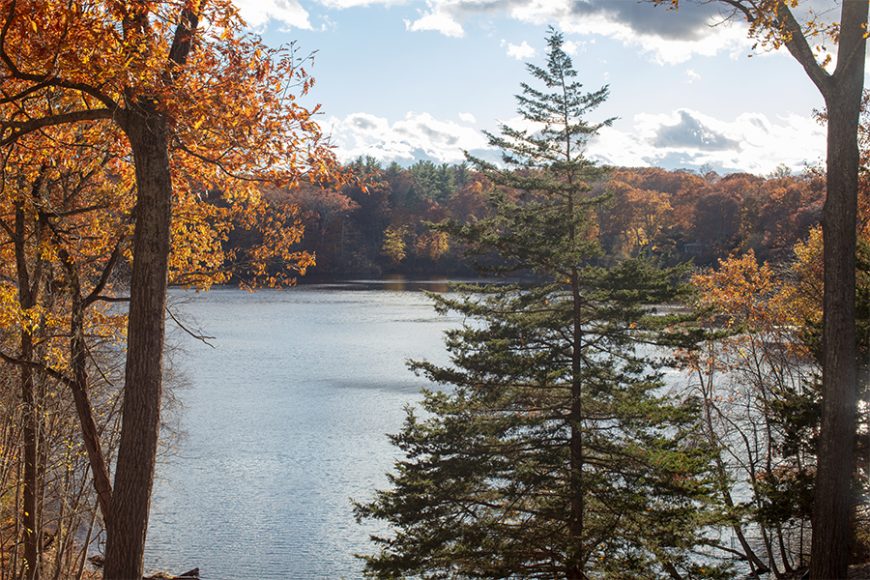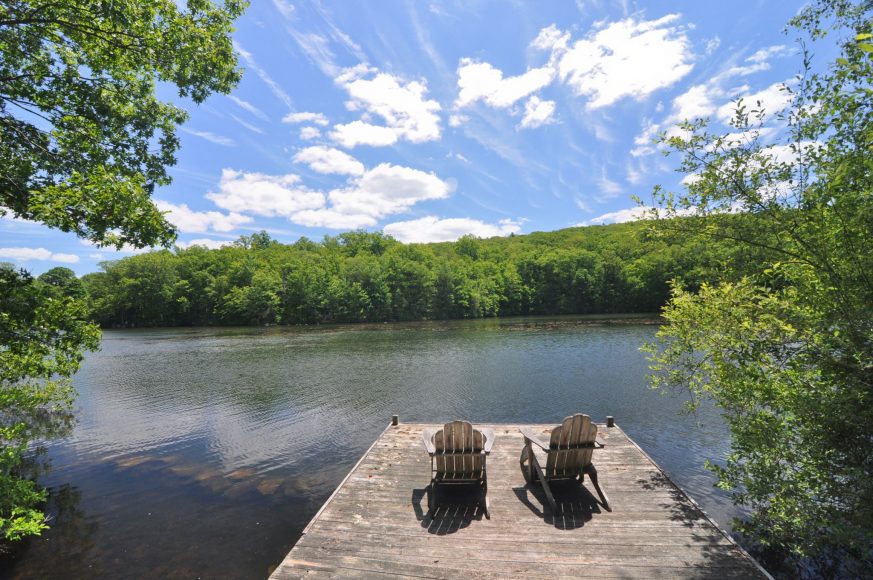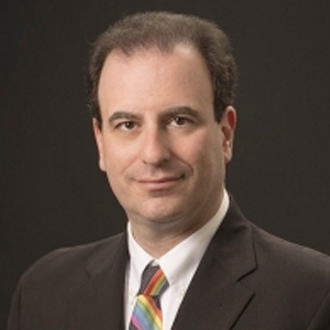Twenty years ago, Stephen Shalen and his wife Wendy were in search of a new residence within Westchester County.
“We were looking for a more secluded and quiet place,” recalls Shalen, a partner with the New York law firm Cleary Gottlieb.
The Shalens’ journey took them to Waccabuc, the smallest of the hamlets within the town of Lewisboro and, arguably, the one with the most colorful history. Its name is derived from the indigenous Algonquian language word Wecpauquag, meaning either “at the end of” or “at the far place.” The original white settlers in the area were unable to accommodate the Algonquian name and dubbed the place Long Pond.
In 1776, Enoch Mead, a member of the wealthy Colonial Mead family, rode on horseback from Greenwich with his bride through the area and fell in love with the surroundings. The Meads settled a homestead where they raised eight children. Enoch Mead also owned three slaves, who were forced to clear the land and farm. (Slavery was not abolished in New York — which owes much of its development to this forced labor — until 1827.)
The Mead family was the most important clan in Waccabuc’s development and growth through the 19th and early 20th centuries. The hamlet’s main thoroughfare Mead Street and the stately Episcopalian Mead Memorial Chapel were named in their honor.
By the 1850s, the area was targeted by enterprising hoteliers who promoted its arboreal serenity as a holiday escape from the increasing congestion of New York City. The name Long Pond was considered too quotidian for a holiday destination, and the Algonquian name was refashioned into Waccabuc. The local hotel industry gave way to a more genteel suburban oasis in the early 20th century.
In the post-World War II era, Waccabuc was briefly considered for obliteration in the name of global peace. The site selection committee for the newly launched United Nations weighed plans to acquire a large swath of Westchester that included Lewisboro for the organization’s headquarters campus. Fortunately for Waccabuc, the Rockefeller family purchased a slice of First Avenue real estate along the East River and donated it to the United Nations for its Manhattan headquarters.
In 1956, Waccabuc was the center of the world’s attention again when Hollywood icon Marilyn Monroe married playwright Arthur Miller in a ceremony at the home of Kay Brown, Miller’s literary agent. In the years that followed, Waccabuc attracted many prominent residents in business, politics and entertainment, and the media has focused much of its attention on the surplus quantity of financially successful residents. In November 2018, The Wall Street Journal profiled Waccabuc under the headline “A Hamlet Hideaway for Wealthy New Yorkers.”
But Shalen’s interest in Waccabuc had less to do with history, celebrity or the bank accounts of his prosperous neighbors and more to do with the serenity of the surroundings.
“I like the privacy and beauty,” he says. “Those are the most significant features. I get the feeling as if we are out the country.”
When the Shalens moved to Waccabuc in 1999, they found a home on Whatmore’s Lake, a 25-acre body of water.
“Whatmore’s Lake is a private lake,” Shalen continues. “There are currently eight homeowners on the lake. Under New York law, each of the homeowners owns a portion of the lake. The lake itself is deeded property.”
But how can eight different households take care of a lake? In 1994, resident Alfred DelBello, the former lieutenant governor of New York, and his wife Dee — publisher of Westfair Communications Inc., parent company of WAG magazine — formed the Whatmore’s Lake Association as a nonprofit. The homeowners whose properties surrounded the lake were the sole members of this organization.
“The sole purpose is to maintain the integrity of the lake,” Shalen says. “All of the homeowners treat the lake as you would like a lake to be treated.”
The association keeps an eye on lake levels and an outlet pipe at the northern end of the lake can be opened to flush out spillover if levels get too high. But much of the physical upkeep of the lake is outsourced to SOLitude Lake Management, which handles issues related to algae and excessive weeds.
“We are probably their smallest client,” Shalen laughs.
Shalen served as the association’s president from 2014 until earlier this year. His presidential duties involved soliciting funds from the association’s households to cover the costs of lake maintenance, as well as occasionally cleaning out debris and vines from the manmade dam where the outlet pipe is located. But, for the most part, leading the association did not cannibalize his time.
“It is a very informal group,” he says. “It is not a very robust organization.”
And, more recently, life on Whatmore’s Lake has become quieter for Shalen.
“This is now the weekend home for six of the eight families,” he says about his lakeside neighbors. “In 20 years, there has been a complete turnover. When we moved here, we were the newest residents. Now, we are the oldest residents.”






